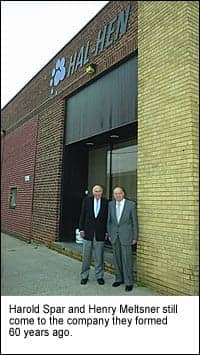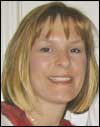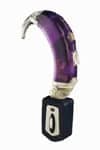
A safe bet today: Aging Baby Boomers will require hearing aids.
Their need for those devices, however, likely won’t become manifest overnight. There probably will be a stretch of years between the time when the majority of Boomers begin to notice they no longer hear as well as they once did, and the point when they will be genuinely ready to start using hearing aids. Until then, all they may need to get by is a phone amplifier or similar type of assistive hardware.
Certainly that is the expectation at Hal-Hen Co Inc, the Garden City Park, NY-based manufacturer and supplier of hearing aid accessories. For some time now, Hal-Hen has been geared up to meet the expected demand for assistive devices. But, rather than only target decibel-challenged Boomers, the company offers numerous products, covering a variety of hearing health care needs, to people of all ages.
“We believe that one of the biggest untapped market segments in the assistive devices segment is made up of the family members, neighbors, coworkers, and acquaintances of middle-aged people who are developing a hearing impairment,” says Joe Vespe, MS, MBA, Hal-Hen’s director of operations. “We’ve noticed them taking a more active role in helping their parents and siblings and friends obtain products, such as amplified telephones and door ringers, to help them improve their quality of life.”
Market Responsive
At Hal-Hen, spotting opportunities—and then quickly capitalizing on them—has been standard operating procedure for 6 decades.
“We’ve always been inventive and market responsive, and that’s our basic business model,” Vespe says. “If there’s a need out there and we find out about it, we react quickly and comprehensively, but in a very well-thought-out way.”

“We learned long ago that you can’t expect to be successful if you let bureaucracy set in—that’s how you become unresponsive and a company where egos rule,” says Hal-Hen’s president, Eric Spar. “In this organization, our way is to allow the best idea to win the day. It doesn’t matter who proposed it first. If it’s a great idea, if it makes strategic sense for the future, that’s all that counts.”
Spar learned to think that way under the tutelage of his father, Harold (Hal) Spar, and his father’s business partner, Henry Meltsner—the Hal and Hen from whom the company’s name is derived. Even though Harold Spar, the company’s president emeritus, and Meltsner, its vice president emeritus, are now octogenarians, both still come to work, setting a focused and energetic tone for the company.
“It means so incredibly much to me, to the leadership team, and to the employees to see them here at their desks,” Eric Spar says.
“We’re not ready to retire,” the elder Spar adds, “and we’re still going strong.”

These days, Harold Spar and Henry Meltsner concentrate mainly on ensuring that the countless products they innovated over the years continue to help people around the world. The two are also very active in Hal-Hen’s charitable donations, which have helped underprivileged adults and children in various countries. They handed the day-to-day operation of the company to their sons about 20 years ago. However, a short while back, Eric Spar and Ron Meltsner, Hal-Hen’s vice president, turned the company’s operations over to Vespe so they could devote the bulk of their energies to running Hal-Hen’s sister corporation, Widex USA, a producer of digital hearing aids that the elder Spar and Meltsner formed 10 years after launching Hal-Hen when they partnered with a hearing aid maker from Denmark.
“Perhaps the most important contribution of Harold Spar and Henry Meltsner is the strong and abiding sense of continuity they provide,” Frankel says. “Because we still have them with us, this is the exact same company today that it was 60 years ago.”
Except that now it has a lot more products in its catalog than it did then.

|

|

|
Huge Catalog
As a supplier of hearing health care products, Hal-Hen currently provides more than 4,000 items for audiologists and their patients. The Hal-Hen product catalog is divided into a number of broad categories, including assistive devices, such as alarm clock wake-up mechanisms, alerting systems, amplified telephones and handsets, FM systems and accessories, fire and doorbell signalers, personal amplifiers, TTYs, television amplifiers, and tinnitus maskers. The company also offers battery testers and batteries, countertop resale accessories, diagnostic equipment, hearing conservation items—chiefly reusable and disposable ear plugs and ear protectors—laboratory and clinic tools, and children’s Huggie aids and accessories.
Notably, not all of the products carry the Hal-Hen brand name. “Many are products we make or import and then brand under other companies’ names,” Vespe says.
Hal-Hen does not sell direct to consumers, although one of its two Web sites is structured for visits by the public. “We offer that as an educational service to the consumer,” Vespe says. “They can look at all of our products and get detailed information about them. Then, if they would like to buy, the Web site leads them to the nearest audiologist or dispenser who carries the item or items of interest.”
Going Platinum
Beyond the products it offers, another ingredient in the Hal-Hen formula for success is its customer service.
“Service and support have always been critical parts of our business,” Vespe says. “The effort to develop and maintain excellent relationships with our customers has led us to make platinum service our standard. It doesn’t matter who the customer is—we treat everyone with the same exceptionally high level of care whether they are giants of the industry or small regional or local outlets.”
Eric Spar adds that the underlying goal of the company’s approach to service is “to help audiologists and dispensers be more successful with their practices.” To that extent, Hal-Hen invests heavily in the production of education-oriented communications. “Take infection control, for example,” Vespe offers. “We, not long ago, came out with an informational sheet describing the latest in infection control products along with tips on how best to utilize them and, in the process, be able to satisfy some of the tightened-up OSHA regulations.”
Hal-Hen-generated information is imparted to audiologists and dispensers via journal advertisements, news releases, direct mailers, trade show exhibits, and the company’s professionals-only Web site.
A Team Effort
It takes many employees to make Hal-Hen tick. “Hal and I recognized from the very beginning that our company’s success was going to depend on our employees, and that’s why we treated each one as a member of the family,” Henry Meltsner says. “In that way, we were able to create very loyal and very knowledgeable employees; some of the people on our team have been with us for 3, 4, or 5 decades.”
The team members will be no less important to the company in the future, if, as Hal-Hen forecasts, there eventually comes an upsurge in demand among Baby Boomers for more than assistive devices. “There’s little question there will be industry growth,” Eric Spar says, “and one force behind that is the favorable demographics—the graying of the Baby Boomers. A big challenge for us is to consistently introduce new products as our industry matures.”
Rich Smith is a contributing writer for Hearing Products Report.
|
Their fledgling company veered into the hearing aid industry a short time later when a manufacturer asked them to assemble a hearing aid receiver cord. Upon completion of that job, Spar and Meltsner engaged in a bit of detective work and discovered that the industry practice at the time was for exclusive relationships between manufacturers and dispensers. As such, if a hearing aid user were traveling out of state and the receiver cord broke, he might encounter difficulty finding a shop that carried the brand. “We decided to produce replacement cords for each make and model, and provide them to all dispensers throughout the country so that users could get service anywhere they went,” recalls Meltsner, who adds that, in the course of calling on dispensers to market the Hal-Hen line of replacement cords, he and Spar made a point of asking each retailer what other products individuals with hearing impairments might require. “We were looking for needs that we could fill.” And find them they did. One of the first Hal-Hen products made in response to those gleaned insights was a moisture-removing pouch in which hearing aids could be stored overnight or when not in use. All these years later, that product, the Dri-Aid™, is still available in its original form, along with many additional innovative and unique drying products. “The government had a lot of war surplus items that we knew it wanted to dispose of [and] our eye was caught by a waterproof pouch originally intended to protect an aviator’s maps and other important papers in the event he had to ditch his plane in the ocean,” Spar says. “We bought a large quantity of these. Then we obtained a moisture-absorbing silica gel, which we placed inside these pouches. Consumers put their hearing aids in the pouches and the desiccant removed the moisture. This was a product that proved particularly successful in Florida where hearing aid users faced almost year-round high humidity.” Idea Foundry The company also scored big with a testing stethoset it introduced in the late 1940s. “This device allowed a teacher with a classroom full of hearing-impaired students to, at the start of the day, check each and every one’s hearing aids and be done with the procedure in a matter of 15 minutes,” Spar says. “The inspiration for this product came from the teachers themselves who complained that it was taking them up to 90 minutes to check their students’ hearing aids, which was time that could have better been spent doing actual instructing. We still carry this product to this day.” |






